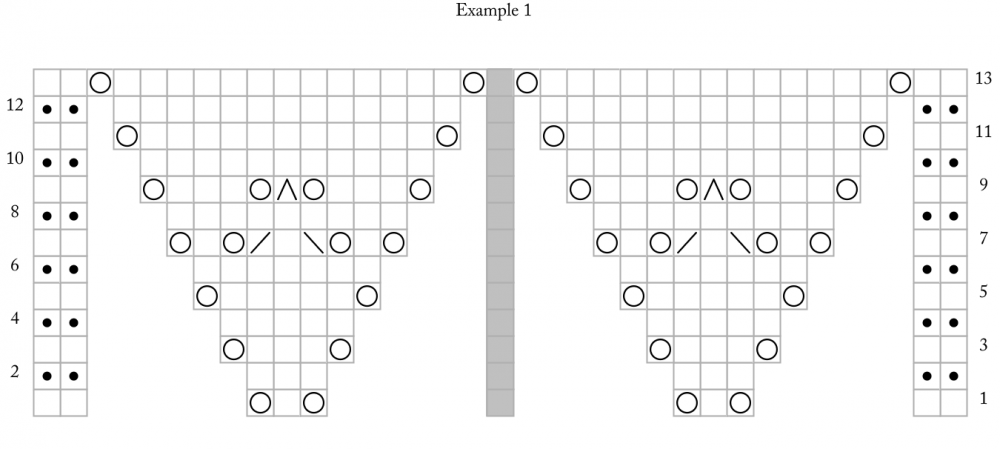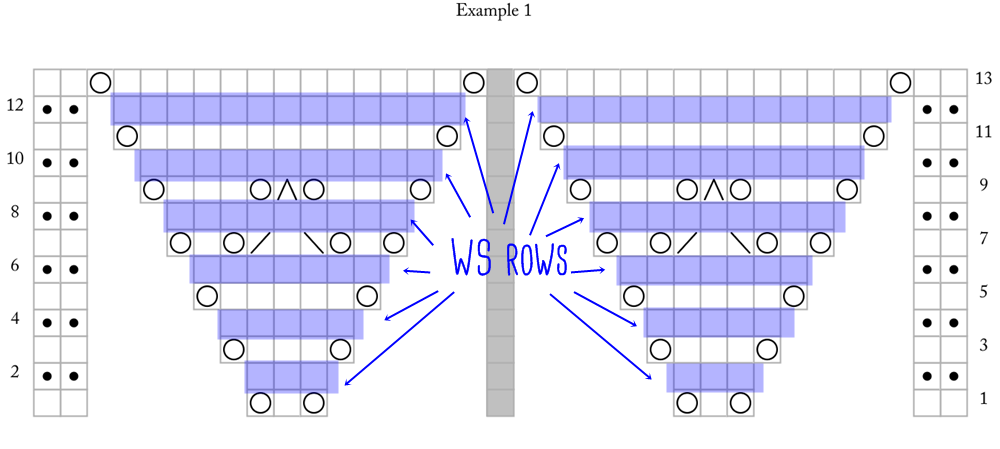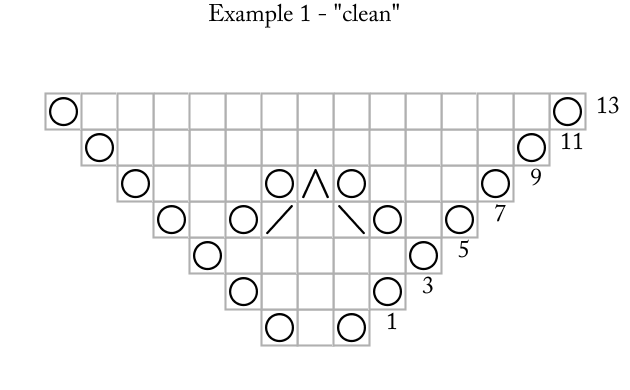Tutorial: Lace Charts 1 - The Anatomy of a Lace Chart
I like my patterns to be inclusive, so I try to offer them with both written and charted instructions. However, sometimes (like the Mahy shawl) a chart is the best way of offering concise and precise information. I know many people don't like charts, but I hope this series of tutorials will go some way to demystify charts and explain how to use them. This first post is about the anatomy of a lace chart and what decisions go into making a chart as easy to read & use as possible.
Here's a mock-up of a chart showing the beginning of a triangular shawl.

There is a lot of redundant information here. Look closely and you'll see that all the even-numbered rows are telling you to k2, purl across, k2. Those are the WS rows.

To stop your eye being bombarded with repetitive and redundant information, these rows are hidden. I would then add a note to the pattern itself: "Work all WS rows as follow: k2, purl across, k2"
The chart would then look like this:

That's better. Without distracting WS rows that tells you the same thing again and again, it's far easier to see the odd-numbered rows (RS) where you will be working a pattern. Hang on, there is more redundant information.

Due to the construction of a standard triangular shawl, you are doing four things again and again. We've already discussed the first (WS rows), so let's look at the other three. The second thing you keep doing is knitting the first two stitches of every row. The third thing you do is to knit the centre stitch. The fourth thing is to knit the last two stitches of every row.
But there is a fifth instance of repetition in this chart. Have you spotted it?
 The chart has you repeating the same stitch patterns after the centre stitch (I will be writing more about this in a later instalment. Note that I am talking about actions in the image- in the next part I will share how you read a lace chart and we'll talk more about actions then).
The chart has you repeating the same stitch patterns after the centre stitch (I will be writing more about this in a later instalment. Note that I am talking about actions in the image- in the next part I will share how you read a lace chart and we'll talk more about actions then).
By now you will have twigged that I am a big fan of removing repetitive information. Some patterns work best if I keep the edge stitches, the centre stitch and the two sides of the lace chart - I find the edge stitches and the centre stitch particularly useful as anchors - but other patterns are so full of information, that I want to leave out all the repetitive actions. It depends upon who the pattern is aimed at - easy shawls will have more anchors and complex shawls far fewer.
And so for complex shawls I'd add in-depth notes:
- Work all WS rows as follow: k2, purl across, k2
- All rows begin and end with k2 (edge stitches)
- Remember to work the centre stitch forming the spine between the two sides of the shawl.
And so the chart ends up looking like this:

This post is part of my Lace Chart tutorial series:
Lace Charts 1 - The Anatomy of a Lace Chart Lace Charts 2 - How to Read a Basic Chart Lace Charts 3: How to Read a Shawl Chart Lace Charts 4: Chart Tricks & Knitting Hacks
If you found this post complex, don't worry! We are going back to basics next time where I'll show you how to read a lace chart! As always, please do leave comments! Kx